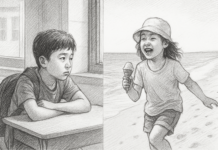-
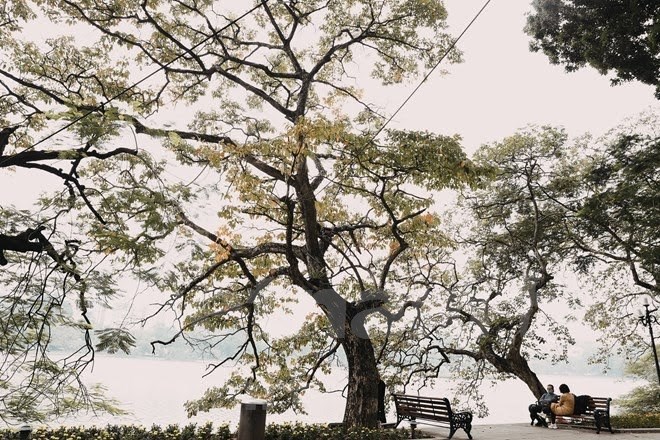
Hanoi has four distinct seasons in a year – spring, summer, autumn and winter. Hanoi’s winter lasts from early December of the previous year to February of the following year. The season always brings special feelings to both locals and those who visit the beautiful city for the first time. Not as sweltering as summer days, nor as passionate as autumn, with the scent of milk flowers, this year’s winter in the capital began with mild cold spells accompanied by rain but still a few days of sudden sunshine. It seems that this year winter comes early, a few monsoons come from the end of October, making people wear warm clothes earlier. (Photo: VietnamPlus)
-

The weather in Hanoi during winter is no similar to any other places. The soothing coolness from autumn gradually vanishes, leaving room for the freezing chills to fill the air. Visiting Hanoi in the early days of winter, visitors cannot help but be surprised to see a very different image of the capital city. Through ups and downs of the history, small street corners with traditional features are always reminiscent of the past, engraved in the hearts of every citizen of the capital. Hanoi has become more and more integrated into the world, having been given the title ‘A City for Peace’ by UNESCO. It is also known as a safe and friendly destination, with consistent successes of many international events. (Photo: VietnamPlus)
-
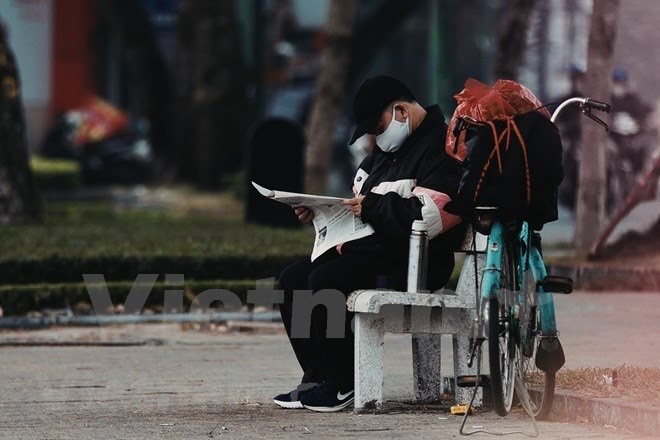
When the plants completely take off its beautiful crimson and gold gowns, and when Hanoi starts to put on a show of continual drizzles and dry, chilly breezes, winter also returns to the city. There is no rain in winter so the weather is dry and freezing cold. Visiting Hanoi these days, people are advised to take with them a scarf as the temperature falls dramatically when the sun sets. Due to the effects of monsoon, in December and January, Hanoi can be extremely cold. In winter, old street corners full of nostalgia last over years. No matter how bustling and busy streets are, people still feel strangely peaceful when coming there. (Photo: VietnamPlus)
-
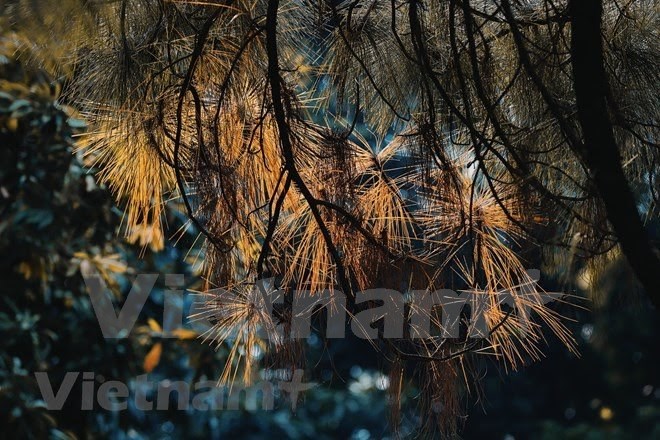
Despite its freezing cold weather, Hanoi is particularly romantic in this time of year. The romantic features of the city come from just simple things. In winter, the average temperature in the city is about 17 Celsius degree. However, sometimes it may drop to below 10 degree, and the high humidity will lend a hand in making the weather bitter cold. If you could spend a moment to look around a just little bit closer, you would see that Hanoi still has a lot to offer, a lot of beauty to show, even in the most ordinaries such as trees on road sides, a quiet coffee shop or a smoggy Hoan Kiem Lake. (Photo: VietnamPlus)
-

Life seems to be slower in winter. Days become shorter while cold, rainy nights seem to last forever. Having a walk early in the morning, feeling the chills tingled in your skin and breathing in a deep inhale of fresh, clean air, and nothing could be better and more refreshing to start your busy day. Each cold season at the beginning of the season and the dry sunny days mixed in the cool breeze easily make people miss like musician Do Bao: “My Hanoi has cold winters/The streets are empty in the mist/ The footsteps of the people walking are not rushed, the faces are not hard”. (Photo: VietnamPlus)
-

Not being as busy as Ho Chi Minh City, Hanoi has its own beauty from the combination of old and modern features. The image of tropical almond trees with the last red leaves remaining on the thin branches is like a symbol of Hanoi beauty in winter. Hanoi, a charming city with a history of over one thousand years, is the convergence of cultural and historical essences of Vietnam. In 2019, Hanoi was also ranked fifth among the seven best places in Asia for solo travellers by Bigseventravel. The Italian tourism website described Hanoi as a hectic, crazy and often confusing city, and a wonderful base from which to explore the north of Vietnam. (Photo: VietnamPlus)
-
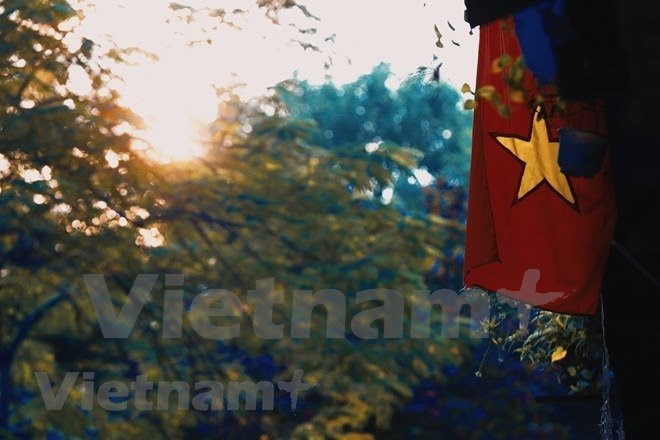
The combination of the yellow colour of falling leaves and stained old walls makes a picture of pure nostalgia. Scenes like this are a characteristic of Hanoi where the old and new merge together. That is why the city is dear to its residents and becomes a magnet to visitors. Hanoi has been emerging as a top destination for both domestic and foreign travelers in recent years, and it is still working to establish itself as a tourist magnet. The city has coordinated with CNN to promote its image through short advertising clips such as “Hanoi – The Cradle of Heritage” and “Hanoi – The Heart of Vietnam”, which have attracted a lot of foreign viewers. (Photo: VietnamPlus)
-
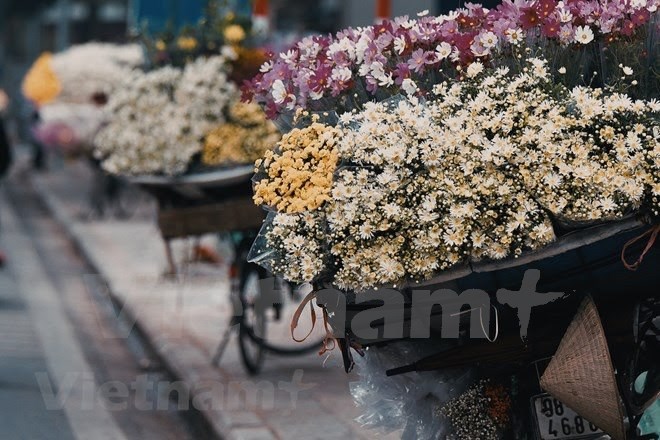
It is said each month in Hanoi is marked by the appearance of its own flower, offering an ideal time for locals to take photos with the blooming flowers as the seasons transition. For Hanoi, Cuc hoa mi is the flower of winter. Its charms lie hidden in the loveliness of little daisies in pure white and beaming gold, and in the rare sunny days when the sky seems to be brighter and everything glows in liveliness. Cuc hoa mi or white daisies are often in full bloom in November, signalling the beginning of Hanoi’s winter. During this time, many people flock to daisy gardens to take photos with the flowers. (Photo: VietnamPlus)
-
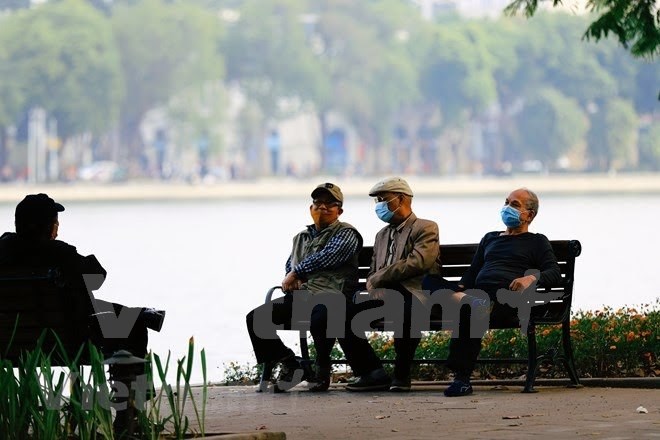
People take a rest in benches along Hoan Kiem Lake after taking a leisure walk around the lake to enjoy the landscape. Hoan Kiem Lake is the center of the Hanoi. It is famous for the peaceful beauty, the cultural and the historical values. It is the must-visit site in a city tour itinerary. The lake lies at a pivotal point in the city, linking blocks of ancient streets like a palm leaf. Hang Ngang, Hang Dao, Cau Go, Luong Van Can, Lo Su, Nha Tho, Trang Thi, Hang Bai, Dinh Tien Hoang, Trang Tien, Hang Khay and Ba Trieu all run into the lake like small streams. Day and night, the rhythm of life round the lake is always bustling and exciting. (Photo: VietnamPlus)
-

A small “tra da” (ice tea) stall with some plastic chair is enough for a friend meeting. The scene of the tea stalls temporarily set up on the pavements, separated from the bustling life of a fast growing city, aroused much interest and curiosity in visitors, urging them to discover why such humble drinks and spaces charm Hanoians from all walks of life. In summer time, the tea is served cold, while in winter, hot tea is often ordered. Such spaces without any walls and located right next to the noisy busy streets still offer privacy and at the same time, offer bonds between strangers. (Photo: VietnamPlus)
-
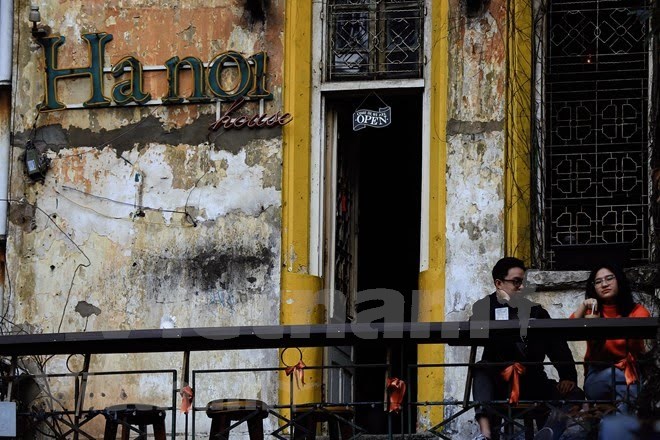
Wherever they go, those who were born in Hanoi are still proud of the old streets that bring back a lot of fond memories. The capital city is changing day by day with bustling high-rise buildings. However, Hanoi still has tile roofs and yellow walls that are enough for people to be lost in reflection whenever they recall. Houses with old architecture still lie there as if they hold remaining memories of Hanoi through changing years. It is uncertain as to when they have become an inevitable part that people cannot help but miss. In any small street corner, Hanoi still appears peaceful and simple with residents living slowly and leisurely amidst the chaos of life. (Photo: VietnamPlus)
-
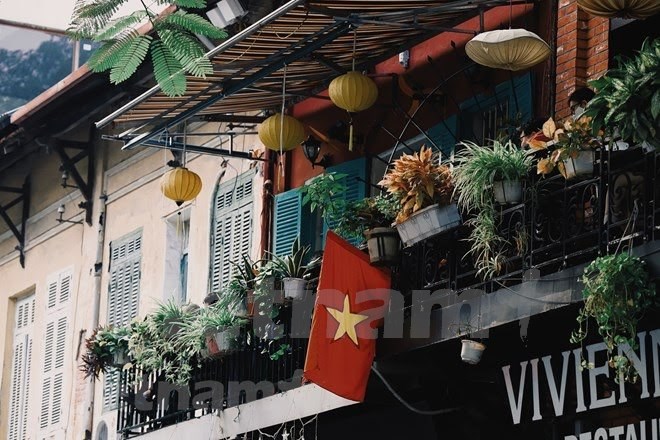
It could be said that ancient houses and old street corners are always “specialties” that attract tourists whenever they visit the capital city. In Hanoi, there are places that are not for those in a hurry, come and go because their spaces are available for visitors to stand for hours to admire. Many houses dating back to the French colonial era still quietly endure the changes of Hanoi. They are the highlight of the neighborhood with red tile roofs, bright yellow walls, and glossy green painted wooden windows. Through ups and downs of the history, the small street corners with traditional features are always reminiscent of the past, engraved in the hearts of every citizen of the capital. Old street corners full of nostalgia last over years. (Photo: VietnamPlus)
-
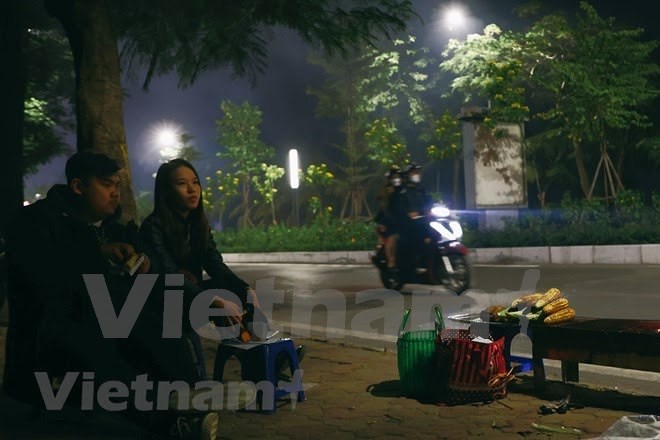
Hanoi is a heaven of street food, which is one of its attraction to visitors. Hanoi welcomed 2.9 million visitors, all from localities inside the country, in the first nine months of 2021, a fall of 57.5 percent year on year because of the COVID-19 pandemic, according to the city’s Department of Tourism. The department reported that total revenue of the sector also dropped 66.2 percent over the same period last year to 8.17 trillion VND (356.1 million USD). In the coming time, the department will focus on strengthening COVID-19 prevention and control among those who engage in tourism activities in the city, while increasing information technology application in tourism management. (Photo: VietnamPlus)
-
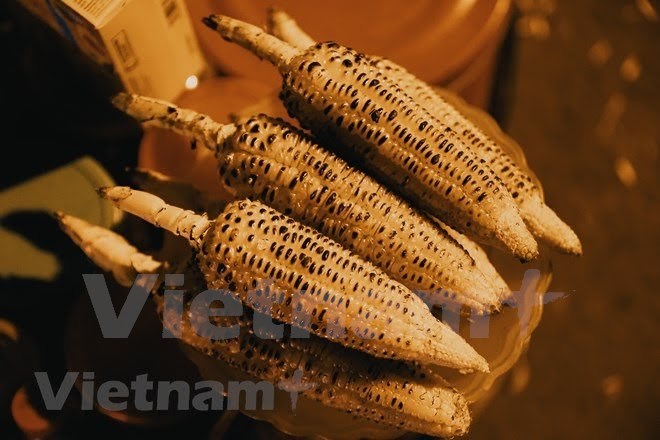
The delicious scent and hot steam blow a faint whiff of warmth into the freezing air, into the mind and soul of Hanoians. Hiding away from winter rain under some unknown roof, with a hot, fresh cooked steamed yam in hand, suddenly all the chill and coldness seem to fade away. Grilled corn on the cob is a specialty of Hanoi in winter. Over centuries of practice, perfecting Ha Noi cuisine has become somewhat of an art form. In other regions, each locality has its own traditional dish which is considered a staple. But in Hanoi, eaters can choose from a long list of specialities. (Photo: VietnamPlus)
-
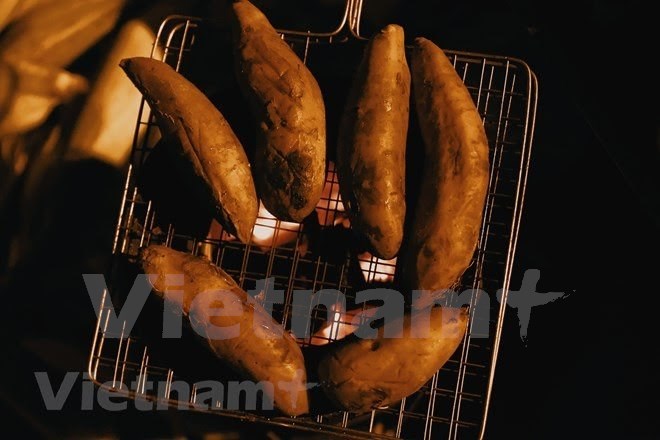
Apart from grilled corn on the cob, in winter, Hanoi also has a dish worth trying – baked sweet potatoes. The feelings of aroma from sweet potatoes will linger for a long time for its special taste and smell – a rich aroma that is unforgettable. With its dazzling array of dishes and flavours, Ha Noi’s cuisine is considered to be one of the main strengths of its tourism sector. But while most tourists only currently get the chance to eat the food, offering them opportunities to experience a real culinary tour is an essential step towards putting the city on the map as a genuine food destination. (Photo: VietnamPlus)
-

Having a ride in Long Bien bridge in winter is a habit of Hanoi youth in every winter. The 116-year-old bridge spans three centuries and is considered an important and central part of Hanoi’s development and history. The steel structure witnessed the withdrawal of French troops from Hanoi and welcomed Vietnamese soldiers to liberate the capital in 1954. Long Bien Bridge was designed by world renowned engineer Gustave Eiffel, who was also the designer of the famous Eiffel Tower in Paris. It was constructed between 1899 and 1902 and first opened to traffic in 1903. At the time it was then the only bridge spanning the Red River connecting Hanoi and Hai Phong port city. (Photo: VietnamPlus)
-
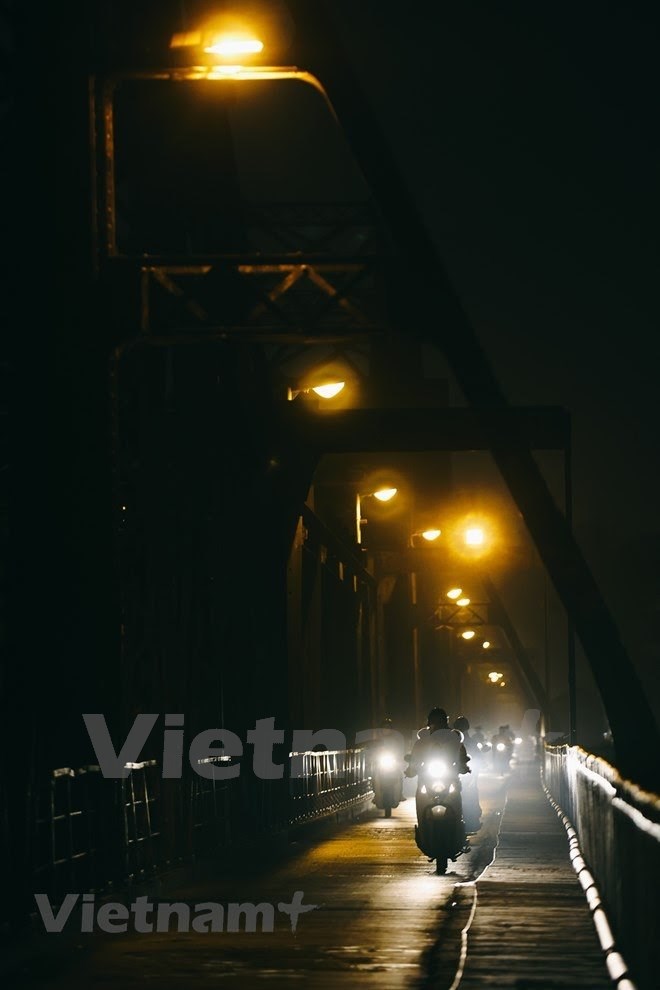
Lines of vehicles crossing the bridge under the fanciful lights through the thin fog make Long Bien Bridge in the winter evening romantic. According to the 2021 TripAdvisor Travelers’ Choice Awards, the city was one of the four Vietnamese cities listed among the most popular destinations in Asia in 2020. On the list, the capital city of Hanoi ranked second, the ancient city of Hoi An in central Quang Nam province came fourth, Ho Chi Minh City was placed 11th, and central Da Nang city was at the 16th position. The capital city was also ranked the sixth place among the 25 most popular destinations in the world by TripAdvisor. (Photo: VietnamPlus)
-

Winter is the season of love when people tend to get closer together to secure warmth. Hanoi was recognised as a “City for peace” by UNESCO (July 16, 1999). Hanoi was among five cities on five continents presented with the “City for Peace” award by UNESCO to recognise its contributions to the struggle for peace as well as its development that met the organisation’s standards of equality in the community, urban construction, living environment, culture and education promotion, and care for younger generations. The title helps the city promote its beauty, culture and people as well as the image of a “City for Peace” among international friends. (Photo: VietnamPlus)
Romantic Hanoi in winter
The winter in Hanoi is the most special season where the capital city shows off its romantic features even from simple things.



